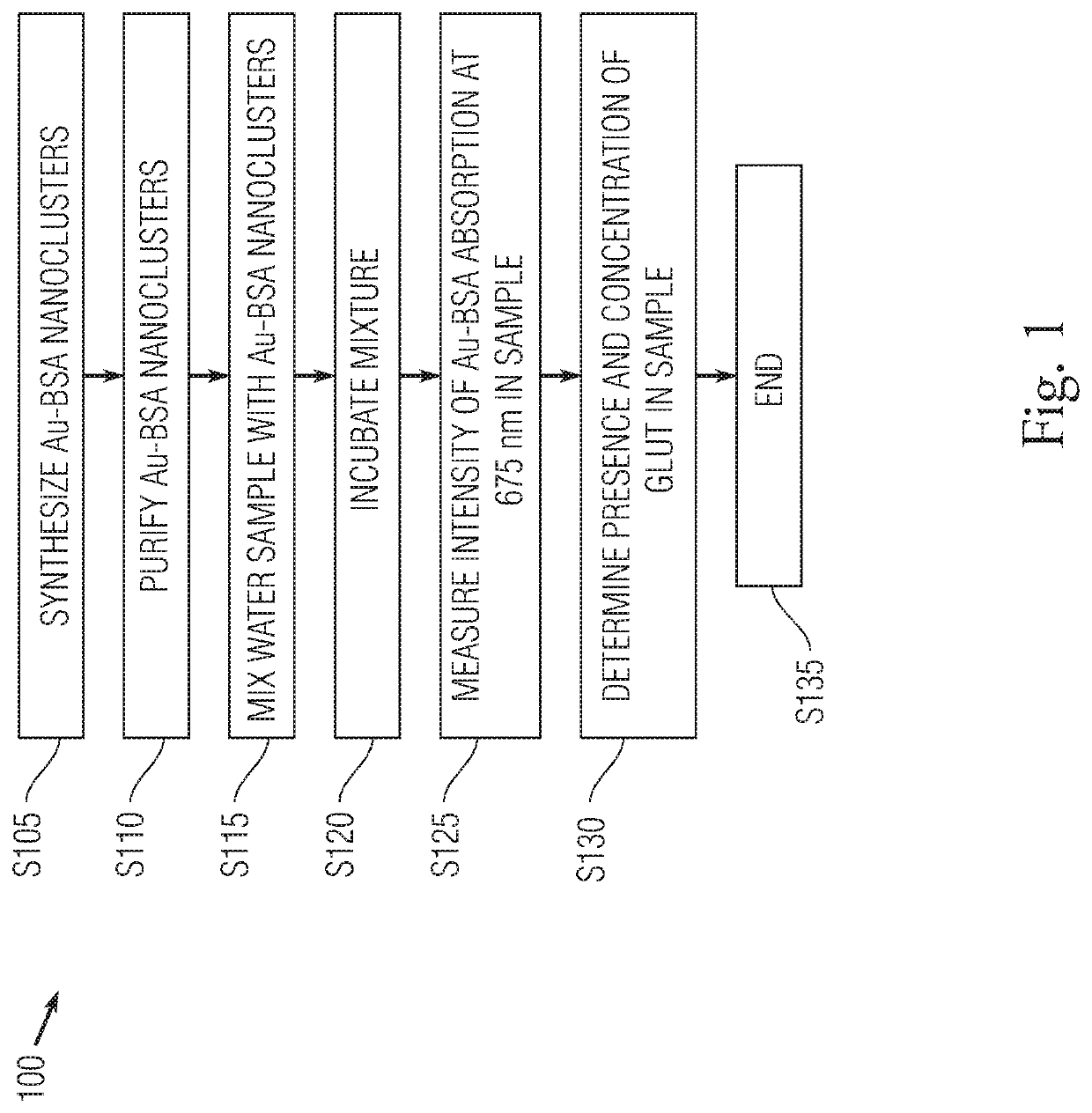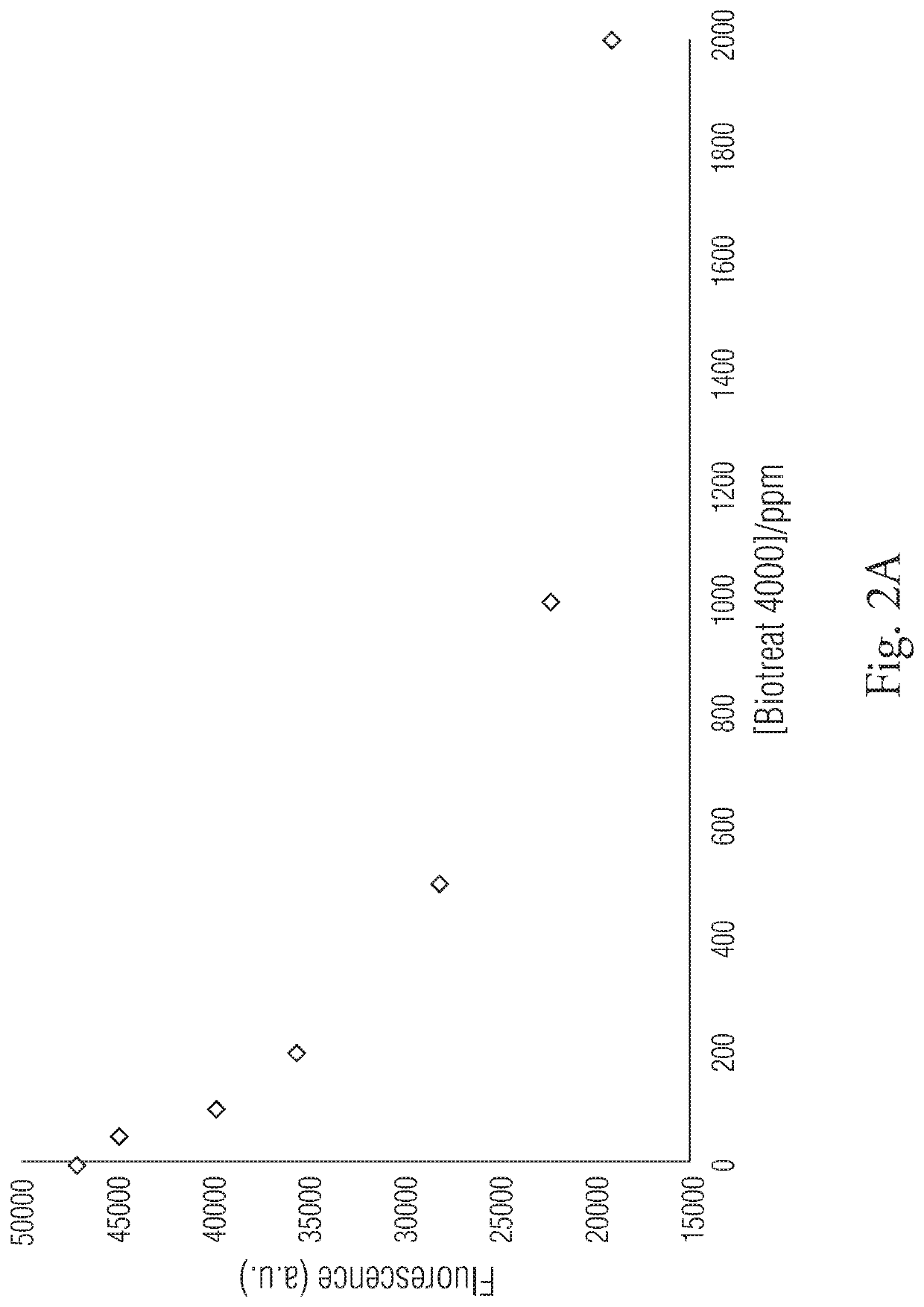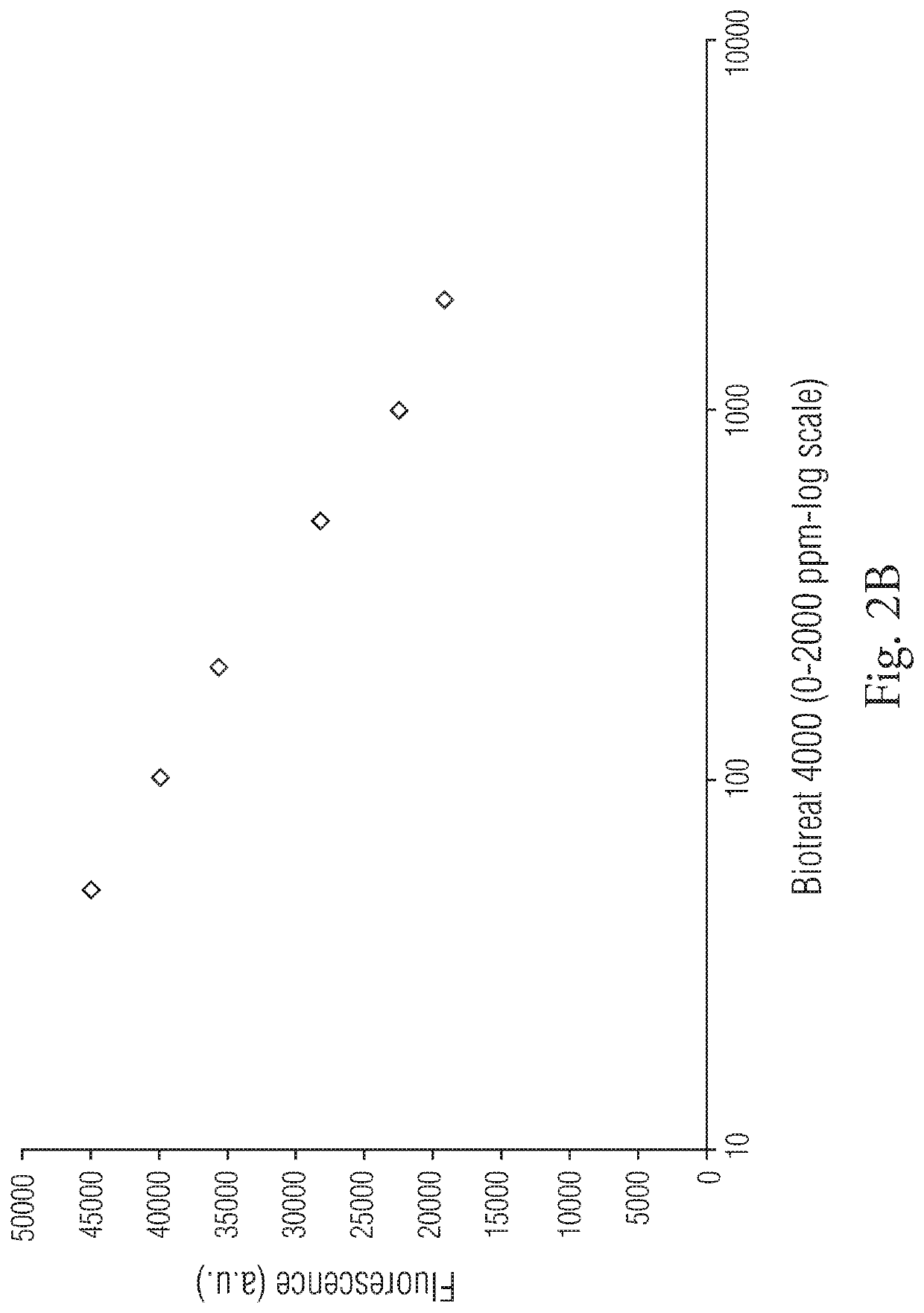Methods for detecting and quantifying glutaraldehyde-based products in water
a technology of biocide and products, applied in the field of detection and quantification of biocide-based compounds in water, can solve the problems of long reaction time, inability to detect glut online, and inability to achieve online field glut detection, etc., and achieve the effect of facilitating the reaction of glutaraldehyd
- Summary
- Abstract
- Description
- Claims
- Application Information
AI Technical Summary
Benefits of technology
Problems solved by technology
Method used
Image
Examples
example 1
[0039]In this example, fluorescence quenching of Au-BSA nanoclusters in accordance with one or more embodiments of the present application is validated using a biocide product comprising GLUT in demineralized water. A biocide product (Biotreat 4000) containing 25-50% GLUT was used in this experiment. The product was diluted in demineralized water into 0, 50, 100, 200, 500, 1000, 2000 ppm of the biocide. After mixing the biocide (diluted with demineralized water) with a Au-BSA nanoclusters solution, the samples were incubated for a short time (maximum of 10 minutes) at 37° C. to support the reaction (quenching) between the GLUT in the biocide formulation and the Au-BSA nanoclusters. FIGS. 2A-2B show the resulting calibration curves based on the fluorescence intensity of Au-BSA nanoclusters, with the BIOTREAT 4000 concentrations on a linear scale (FIG. 2A) and on a logarithmic scale (FIG. 2B). As shown by the calibration curves, the fluorescence intensity of quenched Au-BSA nanocluste...
example 2
[0040]This example provides validation of fluorescence quenching of Au-BSA nanoclusters in Arabian Gulf Seawater (AGS) in accordance with one or more embodiments of the present application. AGS is widely used in the Middle East region for reservoir injection for pressure maintenance of oil reservoirs. The treated AGS is transported through complex pipeline network for reservoir injection, and the microbial activities in the AGS are controlled by biocide treatment. The fluorescence quenching assay of Au-BSA nanoclusters was validated in AGS, which has salinity around 57,000 mg / L. AGS has much higher salinity than average salt water in the world's oceans (approximately 35,000 mg / L).
[0041]The influence of AGS was tested for the inhibition of the fluorescence of Au-BSA nanoclusters at various concentrations of a GLUT-based biocide, DURACIDE 9229. DURACIDE 9229 contains 20-60% of GLUT, and samples of 100, 250 and 1000 ppm of DURACIDE 9229 were prepared in demineralized water (demi water)...
example 3
[0042]In this example, an exemplary procedure for synthesizing and purifying Au-BSA nanoclusters is provided in accordance with one or more embodiments.
[0043]First, 17 mg of gold chloride is dissolved in 5 ml of demineralized water and gently agitated until the solid material is completely dissolved. The resulting gold chloride solution (10 mM, 3.4 mg / ml; volume 5.0 ml) is protected from light if it is not used immediately.
[0044]Second, 250 mg of BSA is dissolved in 5 ml of demineralized water and gently agitated until the solid material is completely dissolved. The resulting BSA solution (50 mg / ml; volume 5.0 ml) is stored at 4° C. if not used immediately.
[0045]Third, 0.5 g of sodium azide is dissolved in 5 ml of demineralized water and gently agitated until the solid material is completely dissolved. The resulting sodium azide solution (10 wt %, 5 ml) is stored at 4° C.
[0046]To prepare the Au-BSA nanoparticles, the gold chloride solution (5 ml) and the BSA solution (5 ml) are equi...
PUM
 Login to View More
Login to View More Abstract
Description
Claims
Application Information
 Login to View More
Login to View More - R&D
- Intellectual Property
- Life Sciences
- Materials
- Tech Scout
- Unparalleled Data Quality
- Higher Quality Content
- 60% Fewer Hallucinations
Browse by: Latest US Patents, China's latest patents, Technical Efficacy Thesaurus, Application Domain, Technology Topic, Popular Technical Reports.
© 2025 PatSnap. All rights reserved.Legal|Privacy policy|Modern Slavery Act Transparency Statement|Sitemap|About US| Contact US: help@patsnap.com



